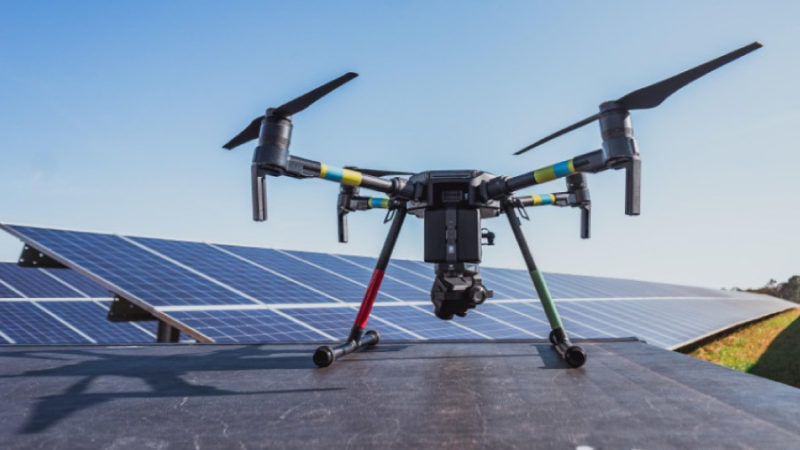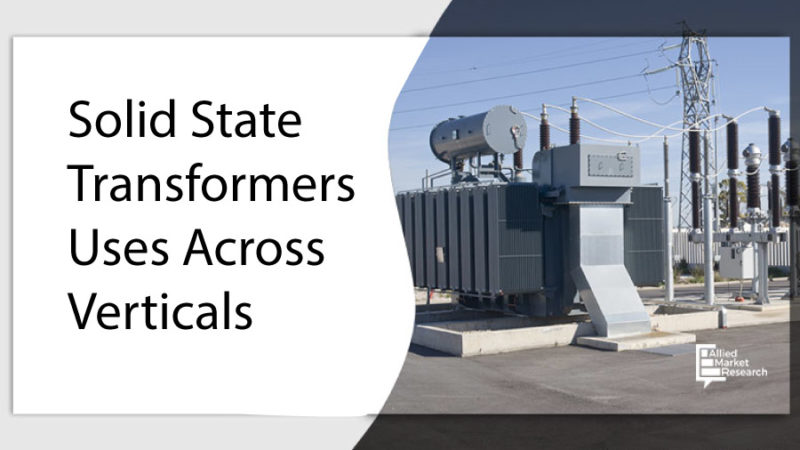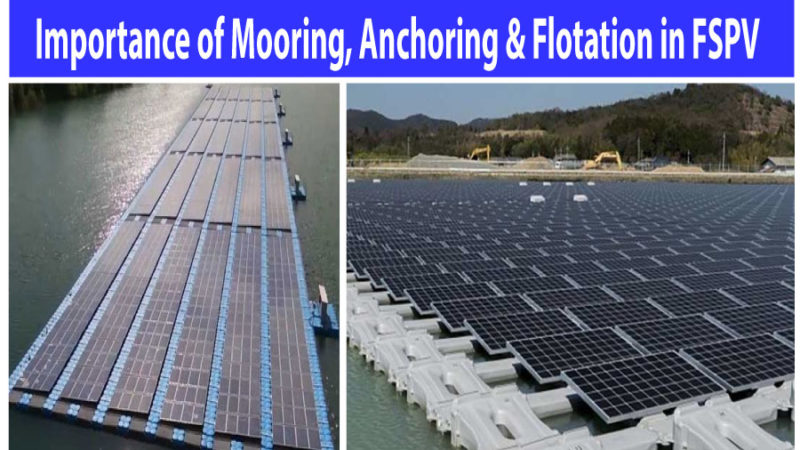Transmission Sector Challenges in India
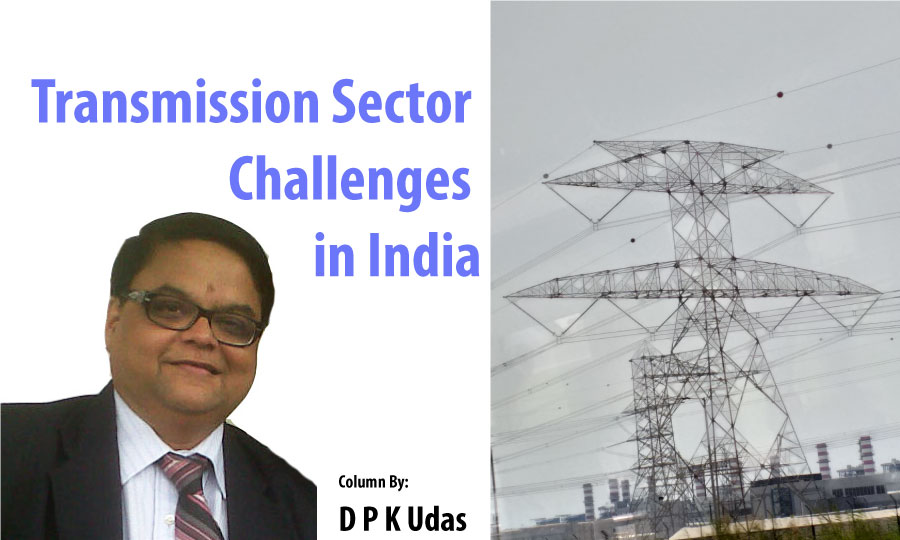
There is a transmission network of 3 lakh circuit km in India and there is addition every year. The break up is as follows – (765 kV – 8000 kms ; 400 kV – 1,25,000 kms ; 220 kV – 1,50,000 kms ; 500 kV HVDC – 9500 kms). Also there is the interconnection with neighbouring countries and more such lines are planned.
However, in India Northern and Southern region is power deficit. There is surplus power in other regions. This prompts evacuation of power from power surplus regions to power deficit regions.
Keeping Up With Trends
Earlier there was a trend to put up huge size power generating stations. This involved generation of power by thermal, hydel, and nuclear. Power plants of Mega size and Ultra Mega size were set up. It involved the evacuation of huge power. Earlier kV rating of the transmission line was 132 kV and later 220 kV. This was not sufficient so PGCIL set up a huge network of 400 kV. The demand for evacuation was still rising and 765 kV rating lines were set up.
The industry also upgraded themselves for this high kV equipment. All transmission component companies and control equipment companies developed high kV rating products. Whenever there was a need, know-how was purchased from foreign collaborators. The products developed required a huge amount of money for testing in Indian and foreign laboratories. This was done by Indian manufacturers.
However later on Power Generation focus changed to renewable energy and programme of Extra High Voltage lines reduced to a great extent. Now those invested in type testing and development of high kV rating products are not getting that many orders.
Technical innovations adopted by Utilities
- High Voltage: EHVC: 400 kV – 765 kV – 1200 kV & HVDC: 500 kV – 800 kV
- Increase voltage of existing lines by Insulated Cross Arms (Using Porcelain Long Rod Insulators as a cross arm of the tower) and use of HTLS conductor.
- Dynamic compensation viz. Series Capacitors, SVC, FACTs to maximize utilization of Transmission Capacity.
- Multi circuit towers, tall towers.
- GIS substations
As regards high voltage earlier kV rating of transmission lines went on increasing. There was pressure to evacuate power from Independent Power Producers (IPPs) and Ultra Mega Power Plants (UMPPs) However now generation focus has shifted to renewable. In the case of Solar and Wind Power plants, the requirement of kV rating for evacuation is on the lower side like 33 kV / 66 kV / 132 kV and max 220 kV.
Now, what happens to investment in the development and type testing of High kV equipment done by manufacturers? If they do not get orders then how would they recover the cost?
Another technical innovation is about upgrading an existing transmission line. Earlier lines were laid as per requirement at that time. Now power transmission requirement has increased and it is not possible always to lay line along with the same corridor. There are right of way issues. The uprating of line on the same tower can be done by providing insulated cross arms. 66 kV line can be uprated to 132 kV and 132 kV line to 220 kV. The methodology adopted is to change the cross arm of the tower by porcelain long rod insulator. This moves the conductor of a transmission line up and provides higher ground clearance. This will enable to transmit more power on the same line.
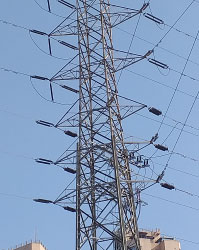 Another option is to provide High Tension Low Sag (HTLS) Conductor. These conductors enhance power operating and emergency transmission capacity by almost double. It also reduces transmission losses by almost 25% to 40%, reduces CO2 emissions and reduces energy cost for consumers.
Another option is to provide High Tension Low Sag (HTLS) Conductor. These conductors enhance power operating and emergency transmission capacity by almost double. It also reduces transmission losses by almost 25% to 40%, reduces CO2 emissions and reduces energy cost for consumers.
Static Var Compensator (SVC) is a device in Flexible AC transmission System (FACT) which uses Power Electronics to control power flow on power grids. Multi Circuit Tower is shown in photo (01). Tower height is increased and lines of different kV ratings are used on same tower.
Pollution is a major issue faced by utilities. The entire selection of transmission components is changing based on pollution level in the region. Tower and tower parts are getting rusted faster than ever before. The places like Tarapur which has atomic power plant and sea close by and Vizag wherein there is steel plant and sea coast the transmission line requires change of components periodically.
Metallic parts like tower members and hardware get rusted. Insulators are also affected most due to pollution. Ceramic cap and pin type insulators have numerous metal parts. They tend to get rusted and finally give away. There is also tendency to form water film on shed due to accumulation of pollutants which can lead to flashovers. Ceramic long rod insulators overcome these difficulties by eliminating intermediate metal parts and having shed profile which does not accumulate pollutants and gets cleaned due to wind and rain.
Another issue which is faced by transmission network is “Changing Climate”. There are incessant rains, heavy winds, rise in temperature, and fog during winter etc. The average rainfall has increased and monsoon is extended.
This causes flooding and electrical equipment in substation can be damaged. Heavy winds are causing uprooting of poles and galloping of conductor. Higher climatic temperature rises temperature of conductor, line hardware etc.
The fog during winter is enemy of insulators. It causes flashovers and trippings. Utilities are gearing up to address these challenges by increasing patrolling staff and using weather forecasts effectively.
Renewable energy power sources have their own challenges in power evacuation.
- Intermittency & Variability: The production of power by solar energy normally starts by 7 am and ends by 7 pm. This is just average time slot. Basically it starts with sun rise and ends with sun set. Also solar generation drops in case of presence of cloud. The rainfall also affects power generation. Similarly power produced by wind energy is intermittent. It depends on speed and quantum of wind.
- Economic Viability of Transmission System: The power produced by thermal power plants is continuous and it is 24X7. Whereas power produced by renewable energy sources is intermittent and variable. Capacity utilization of transmission system can be 20% to 30% which questions its economic viability.
- Integration of Power: It is difficult to integrate renewable energy power with that of produced by conventional sources. However lot of measures are taken for Grid integration of renewable energy.
-
- Load management and Demand response
- Smart Grid
- Renewable Energy Management Centers (REMC) integrated with SCADA/control centers
- Energy Storage
- Grid interconnections for balancing.
Huge potential of Power Transmission within SAARC countries
As regard future of transmission sector there is huge potential in transfer of Power within SAARC countries. SAARC countries have been practicing regional co-operation. They have been exporting energy to each other. There has been setting up of Generating stations in each country and long transmission network to export to other countries.
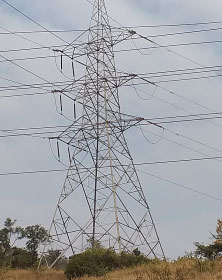 South ASEAN Powergrid was first announced in 2004 by energy ring of SAARC for interconnecting electricity system covering South Asia. Progress has been made in developing bilateral electricity interconnection and trade in several South Asian countries.
South ASEAN Powergrid was first announced in 2004 by energy ring of SAARC for interconnecting electricity system covering South Asia. Progress has been made in developing bilateral electricity interconnection and trade in several South Asian countries.
Other sub regional blocks in the Asia-Pacific region are at varying stages of grid interconnection, most notably the Associations of Southeast Asian Nations (ASEAN) which aims to establish an ASEAN Power Grid. United Nations Economic and Social Commission for Asia & Pacific (ESCAP) as the leading intergovernmental body in the Asia-Pacific, recognizes the importance of developing regional power grid interconnections in support of sustainable development.
The concept of cross-border power system connectivity has gained increasing support from Governments and international organizations, given the benefits it can offer in lowering costs, diversifying supply, and tapping into renewable and low carbon energy resources. Progress in concluding international agreements on sustainable development and climate change provide a new lens through which to examine South Asia’s power grid interconnection. The benefits of power grid interconnection in South Asia are manifold.
National policymakers face an “energy trilemma” of ensuring energy security, affordability and sustainability. Greater connectivity can play a role in solving this trilemma. It can also help to:
- Deliver an increased supply of electricity,
- Provide enhanced energy security by diversifying supply,
- Reduce costs through arbitrage and economies of scale,
- Tap into underexploited energy resources such as hydropower and
- Allow greater use of variable renewable energy through balancing generation over larger pooled areas.
The direct benefits of full power grid interconnection could reach 9 billion dollars every year in direct savings and reduce GHG emissions by more than 9% per annum compared with business as usual, without accounting for social and environmental benefits. SAARC established Energy Centre to drive sub regional cooperation and issued SAARC Frame work Agreement for Energy Cooperation (Electricity) in 2014.
India issued guidelines with provisions for its cross-border electricity trade (CBET) in 2016. The geography of South Asia’s power grids offers many power connection opportunities at border interfaces, with India located at the centre of many power exchange opportunities as an energy supplier, exporter or transit country.
To date, the greatest progress in the sub-region has been made in bilateral interconnection and power trade between Bangladesh, Bhutan, India & Nepal.
These countries have developed a series of interconnection to trade hydro power from Nepal & Bhutan, and to provide support to Bangladesh from India’s grid. At the same time progress on interconnection between SAARC’s two largest economies India & Pakistan, is stagnant. The proposed interconnection between India & Srilanka is still at the feasibility stage.
Afghanistan-Pakistan-India Jalalabad (AFG)-Peshawar (PAK) via Torkham (HVDV line under construction under CASA 1000 project), with onward connection to Amritsar (IND). Annualized interconnection cost in 110 US$ million, Annual benefit of interconnection in 1250 US$ million
India-Nepal towards Bareilly (IND) from Karmali HEP Towards Muzaffarpur (IND) from Tamakoshi, Anun HEPs Annualized interconnection cost in 20 US$ million, Annual benefit of interconnection in 215 US$ million Bangladesh-Nepal Transit possibilities through Siliguri Corridor (IND).
India-Pakistan Amritsar (IND) and Lahore (PAK) HVDC line for 500 MW transmissions. Annualized interconnection cost in 20 US$ million, Annual benefit of interconnection in 491 US$ million.
Bangladesh-India Bheramara (BGD)-Baharapur (IND) (500MV HVDC line) Comilla (BDG)-Pelatana (IND) (100MV), planned). Annualized interconnection cost in 25 US$ million, Annual benefit of interconnection in 389 US$ million.
India-Sri Lanka Madurai (IND)-Anuradhapura (LKA) HDVC submarine cable link through the Palk Strait with 500 MW transmissions. Annualized interconnection cost in 50 US$ million, Annual benefit of interconnection in 186 US$ million.
Bhutan-India Towards Siliguri-Alipurduar (IND) from Tala, Chhukha, Kurichhu Dagachhu and Punatsangchu HEPs Deothang-Rangie (132kV single circuit DC line, eastern Bhutan-NER border). Annualized interconnection cost in 20 US$ million, Annual benefit of interconnection in 1840 US$ million.
Grid interconnection in South Asia can generate direct economic benefits for all participating countries through both exporting and importing electricity. For the hydropower rich least developed countries (Bhutan & Nepal), power exports to their neighbors can generate stable long term export revenue as well as fast-track their graduation from least developed country status.
Larger countries such as India & Pakistan can diversify their generation base and lower overall power costs by utilizing cross-border generation. These two economies may benefit from interconnection that allows optimal exploitation of their wind and solar potential through energy balancing.
Under an integrated grid, countries can be both energy producing and energy consuming at different times or seasons, depending on their energy supply and demand situations.
Setting up of international power grid is also seen to partially address the issue of stressed assets by providing the stranded generating capacities avenues to sell electricity.
India has been exploring the possibilities of constructing 370 km power line from Madurai in Tamilnadu to New Habarana in Sri Lanka. At 2012 price levels, the cost of the project, including submarine cabling, was estimated at more than US$ 550 million. 8014 million units of electricity was supplied by India to Nepal, Bangladesh & Myanmar in April 2019-January 2020 recording a growth of 18.6%.
Bangladesh is the largest buyer of power from India. Bangladesh Power Development Board has signed contracts with Adani Power & Sembcorp Gayatri Power for sourcing electricity from their respective imported coal based plants in Godda, Jharkhand & Andhra Pradesh. The CEA has already framed the draft procedural guidelines for firms to participate in cross-border electricity trade, a move that could open up an annual potential market of additional 5-6 billion units of electricity. While CEA allows Indian entities to import electricity from neighboring countries through bilateral agreements, export of power can now be done through spot power markets as well.
POWERGRID has emerged as a strong player in South Asia and is playing an active role in formation of a strong SAARC grid for effective utilization of resources for mutual benefits.
Presently various interconnections exist between India & Bhutan, India & Nepal and India & Bangladesh. Further interconnection between India & Bhutan, India & Nepal and India & Bangladesh are being strengthened for substantial exchange of power across the borders.
Conclusion:
India has power surplus and power deficit regions. This involves huge transfer of inter-regional power. Also, electricity transfer within SAARC countries has opened up new demand for Transmission products. On the other hand, due to shift in focus to renewable energy transmission lines with lower kV ratings are planned. Thus, manufacturers who invested in product development and type testing of higher kV products are not getting return on their investments.
Pollution –Industrial and Saline is playing major role in selection of transmission line components. Change of climate is big challenge for utilities for maintaining transmission network.





